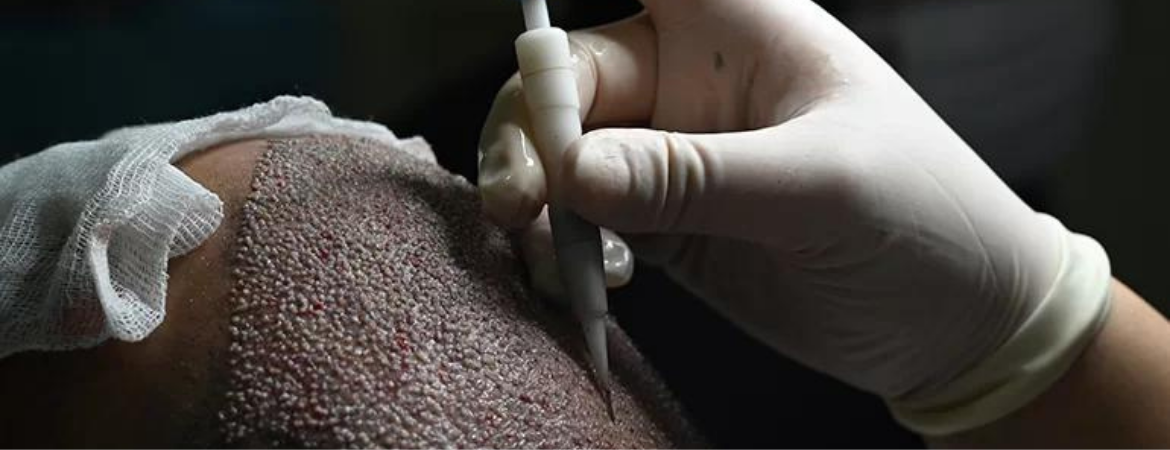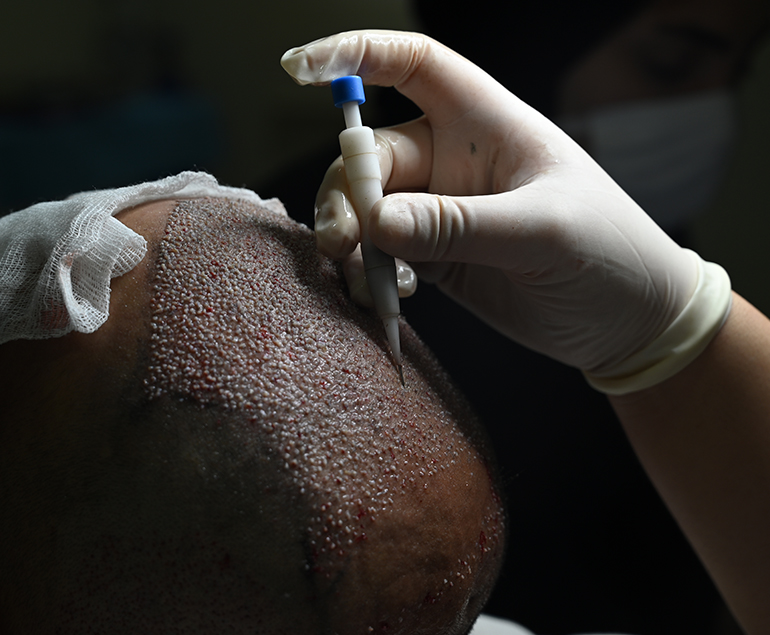
The DHI hair transplant method (Direct Hair Implantation) draws attention to its similarity with the FUE method. The main difference that distinguishes the two methods is the use of the implanter method in the DHI method. In other words, unlike FUE, the DHI method allows transplant thanks to implanters without opening channels in the area where hair will be transplanted. The thin-tipped and sharp-structured Implanter (Chio) needle used during the application plays an important role in making the application easier and more effective.
According to hair transplant experts, this method has quite a few advantages. First of all, the survival rate of the follicles is higher than the DHI method. The duration of the follicles outside the tissue during the operation is short and transplanted quickly. Additionally, since the cutting area on the scalp is low, the risk of bleeding is quite low. This situation allows the patient to have an easier and healthier recovery period after the operation. Due to the comfortable recovery period both during and after the operation, the DHI hair transplant method is often preferred by experts.
However, there are a few points to be considered in the DHI hair transplant method. For instance, even though this method gives effective results, the expert must have sufficient knowledge and experience for the operation. During this method, which requires a more sensitive process than other methods, the expert must be careful and use the Choi carefully. Otherwise, they may damage the follicles of the patient.
Research has revealed that not every patient may be eligible for the DHI hair transplant method. For instance, the achievement drive of this method is lower in patients with curvy and fine-stranded follicles. However, in light of the latest technology, studies have been carried out on Choi pens and innovations have been made to achieve successful results for all hair types. Nevertheless, it is recommended that the expert analyze the patient’s hair type and follicles before the operation. It is known that this procedure is performed following all hair types as a result of analysis in professional clinics.

